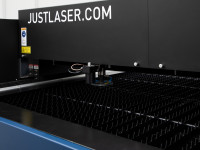Laser safety 101: Everything you need to know about the meaning of laser classes
What are laser classes and what do they mean?
Laser technology has experienced an enormous boom in recent decades and is now used in numerous industries. From medical technology and the manufacturing industry to consumer electronics, lasers have become an integral part of the modern world. However, despite all the fascination with this technology, one key aspect must not be ignored: safety. The laser classes in particular play a decisive role here.
Laser safety is an important topic that is often underestimated. Every year there are numerous accidents involving lasers, often due to a lack of knowledge about the laser classes and their characteristics. The different laser classes are categorized according to how dangerous they are, with class 1 being the safest and class 4 the most dangerous. It is important to know which class the laser used falls into, as this has an impact on the necessary safety precautions.
What are laser classes?
Laser classes are categories that define the safety risks of lasers based on their power and potential hazards to the skin and eyes. This classification is standardized worldwide to ensure the safe use of laser technology.
The importance of classification
Each laser class indicates specific safety requirements. While class 1 lasers are considered safe and do not require any special protective measures, higher class lasers pose potentially greater risks. Class 3B and 4 lasers, for example, require strict safety precautions, such as the wearing of safety goggles or the establishment of safety zones.
Laser safety is an issue that is often underestimated. Lasers can lead to serious injuries that can cause permanent damage if handled incorrectly. It is therefore important to always take the appropriate safety precautions and to be aware of the different laser classes and their characteristics. This is the only way to ensure that you handle your own lasers without putting yourself or other people in danger.
There are numerous measures you can take - from choosing the right protective equipment to receiving the right training in handling lasers. If you follow these tips and take all precautions, you don't need to worry about injuries and can use your lasers without any concerns.
Understanding the different laser classes
Laser class 1
Lasers in this class are safe under normal operating conditions. Either their power is very low or they are encased in a protective housing that shields the laser radiation. They are often used in consumer electronics such as printers or CD players.
Laser class 1M
These lasers are dangerous when looking directly into the beam, but safe when looking at diffuse reflections. They are often used in devices such as rangefinders.
Laser class 2 includes visible laser radiation (400 - 700 nm) with an output power of <1mW, as emitted by a laser pointer. As long as the interaction time with the eye is <0.25 seconds (i.e. the instinctive eyelid closure reflex or the averting reaction can be assumed), class 2 lasers are safe.
Laser class 2M
Similar to class 1M, lasers in this class are dangerous when viewed directly, but safe when viewing diffuse reflections.
Laser class 3R
These lasers are slightly more dangerous than class 2, but the risk remains low. Precautions are required to avoid direct eye contact.
Laser class 3B
Lasers in this class can cause serious damage if they come into direct contact with the skin or eyes. Safety precautions are essential.
Laser class 4
These lasers are the most dangerous and can cause damage even with diffuse reflection. They require extensive protective measures and are often found in industrial applications. Laser machines with powers above 0.5 W fall into this category. If used incorrectly, there is a risk to skin and eyes - both from the direct or reflected laser beam and from scattered radiation. There is also a risk of fire on contact with flammable materials. It is therefore essential to undergo comprehensive laser safety training before starting work for the first time!
Importance of understanding laser classes
To avoid injuries when handling lasers, some basic safety precautions should be taken. One important measure is the correct labeling and classification of the laser in accordance with the applicable regulations. In addition, work areas where lasers are used should be clearly demarcated and marked to keep unauthorized persons out.
It is also advisable to use protective measures such as suitable goggles or protective shields (if these are necessary according to the laser classes) and to carry out regular maintenance and inspection work. Training employees in the safe handling of lasers and having emergency plans in place in the event of an accident are also essential for a safe working environment.
Legal regulations on laser safety
Legal regulations on laser safety are of great importance in order to avoid injuries. In many countries, there are special laws and regulations that govern the safe use of lasers. These regulations specify, among other things, which laser classes may be used in which areas and which safety precautions must be taken. The training of specialists in handling lasers is also regulated by law.
It is important that companies and private individuals comply with these regulations in order to avoid accidents. Violations of the legal regulations can result in severe penalties. It is therefore advisable for both employers and private users of lasers to find out about the respective country-specific regulations and to comply with them consistently.
Tips for the safe use of lasers at home or in the office
Safety precautions when using lasers should not only be taken in professional environments, but also at home or in the office. Here are some tips to ensure that you use the laser safely and responsibly:
- Be sure to read the operating instructions for the laser carefully before using it.
- Always check the laser class and make sure you have the right level of protection for your eyes and skin.
- Never use a laser in the vicinity of children or animals.
- Make sure that the area around the laser is free of obstacles and that there are no reflective surfaces.
- Wear suitable protective equipment such as safety goggles or gloves.
By following these simple tips, you can minimize the risk of injury from laser exposure while reaping the benefits of the laser. It is important to note that these precautions may also be necessary at lower power levels and are not unique to high power lasers.
The classification of lasers provides an important framework for safety when handling this powerful technology. Whether in medical technology, production or in research and development - a sound knowledge of laser classes is essential to ensure the safety of everyone involved and to utilize the full potential of laser technology safely and efficiently.



